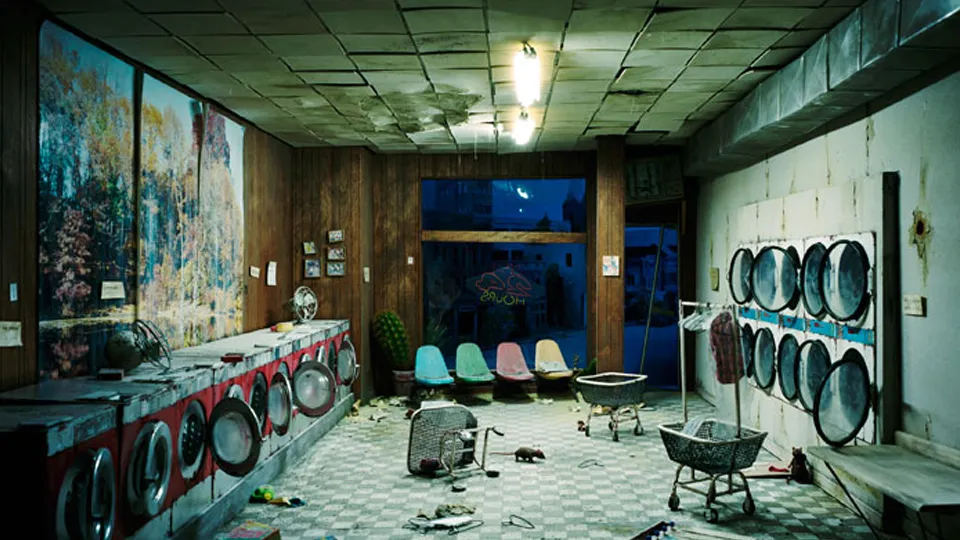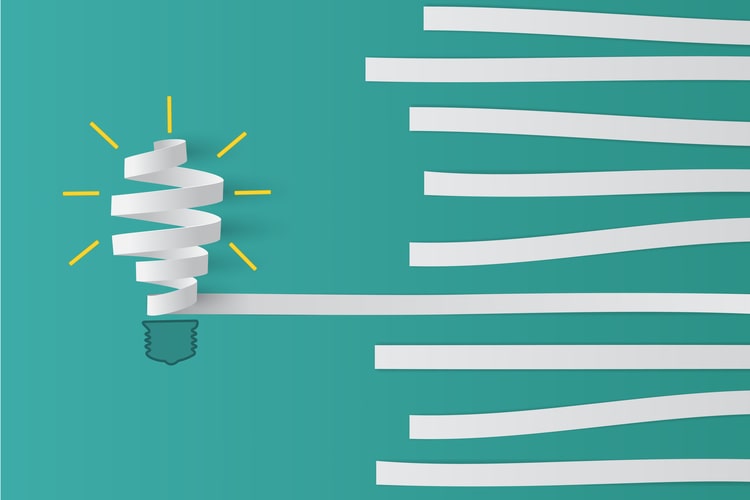Post-apocalyptic fashion photography merges dystopian narratives with haute couture, creating a striking visual language that explores humanity’s resilience through the lens of survival aesthetics.
🌪️ The Rise of Apocalypse Chic in Contemporary Photography
In an era marked by climate anxiety, political upheaval, and technological uncertainty, post-apocalyptic fashion photography has emerged as one of the most compelling and provocative genres in visual storytelling. This aesthetic movement transcends mere fashion documentation, transforming into a powerful commentary on society’s fragility and the human spirit’s endurance.
The apocalypse chic phenomenon represents more than just distressed fabrics and desolate backdrops. It embodies a cultural zeitgeist where fashion photographers, designers, and creative directors channel collective anxieties into visually arresting imagery. These photographs depict models as survivors, warriors, and wanderers navigating landscapes ravaged by unnamed catastrophes, wearing garments that blend high fashion with functional survivalism.
Major fashion houses like Rick Owens, Yohji Yamamoto, and Balenciaga have embraced this aesthetic, while photographers such as Paolo Roversi, Tim Walker, and Steven Klein have crafted editorial spreads that blur the boundaries between fashion photography and cinematic dystopia. The result is a genre that feels simultaneously aspirational and cautionary, beautiful yet unsettling.
Visual Elements That Define Dystopian Fashion Photography
Post-apocalyptic fashion photography relies on specific visual markers that immediately signal its dystopian context. Understanding these elements reveals how photographers construct compelling narratives within single frames or editorial series.
Desolate and Industrial Locations
Location selection serves as the foundation for apocalypse chic photography. Abandoned warehouses, decaying industrial complexes, barren deserts, and urban ruins provide the perfect stage for these dystopian narratives. These environments tell their own stories—of civilizations fallen, economies collapsed, and nature reclaiming human spaces.
Photographers often scout locations that require minimal manipulation to convey post-apocalyptic atmosphere. Chernobyl’s exclusion zone, Detroit’s abandoned factories, Iceland’s volcanic landscapes, and California’s desert salt flats have all become iconic backdrops for this genre. The raw authenticity of genuinely deteriorated spaces lends credibility that studio sets struggle to replicate.
Color Palettes of Survival
The color grading in post-apocalyptic fashion photography typically favors desaturated tones, emphasizing earth colors, rusted metals, ash grays, and oxidized oranges. These palettes evoke nuclear winters, dust storms, and environmental collapse while allowing fashion pieces to pop against muted backgrounds.
However, some photographers subvert expectations by introducing vibrant color accents—a crimson coat against gray ruins, electric blue hair amid brown desolation—creating jarring contrasts that heighten visual impact and symbolize hope or rebellion within bleakness.
Styling: Where Fashion Meets Function
The styling in apocalypse chic photography walks a delicate line between high fashion and believable survival gear. Garments often feature distressed textures, layered silhouettes, utilitarian details, and asymmetrical cuts. Materials range from leather and metal to repurposed textiles and protective gear.
Accessories become particularly significant—gas masks transformed into fashion statements, tactical harnesses paired with couture gowns, combat boots beneath flowing fabrics. These juxtapositions create visual tension that defines the genre’s aesthetic appeal.
📸 Technical Approaches to Capturing Apocalyptic Fashion
Creating convincing post-apocalyptic fashion photography requires specific technical knowledge and creative problem-solving. Photographers must balance artistic vision with practical execution in often challenging environments.
Lighting Techniques for Dystopian Atmosphere
Natural light photography dominates this genre, with photographers leveraging golden hour, overcast skies, and harsh midday sun to create appropriate moods. The soft, diffused light of cloudy days evokes nuclear winter atmospheres, while harsh sunlight emphasizes survival in extreme conditions.
When artificial lighting is employed, photographers often use battery-powered strobes or continuous LED lights to create dramatic shadows and highlights. Lighting setups typically avoid the polished perfection of traditional fashion photography, instead embracing grittier, more naturalistic approaches that enhance the dystopian narrative.
Composition Strategies That Tell Stories
Compositional choices in apocalypse chic photography differ significantly from conventional fashion work. Rather than isolating the model against seamless backgrounds, photographers incorporate environmental context extensively. Wide shots establish the desolate setting, while medium shots show the relationship between subject and surroundings.
The rule of thirds takes on new significance, with models often positioned to emphasize the vast emptiness of post-apocalyptic landscapes. Low angles can make subjects appear heroic or defiant, while high angles might convey vulnerability or the weight of survival.
Post-Production: Enhancing the Apocalyptic Vision
Digital post-processing plays a crucial role in perfecting the apocalyptic aesthetic. Photographers employ various techniques including:
- Desaturation and selective color grading to establish mood
- Dodging and burning to emphasize texture and dimension
- Adding atmospheric elements like dust, smoke, or ash particles
- Enhancing sky drama through gradient filters and compositing
- Texture overlays to increase grittiness and wear
- Subtle vignetting to focus attention and create intimacy
The key lies in restraint—over-processing can make images feel artificial and undermine the authentic dystopian atmosphere photographers work hard to capture on location.
Fashion Narratives in a World That Ended
Beyond aesthetic considerations, post-apocalyptic fashion photography constructs powerful narratives about identity, survival, and transformation in catastrophic contexts.
The Survivor Archetype
Many apocalypse chic photographs present models as survivors—resourceful, resilient individuals who have adapted to harsh new realities. Their fashion choices reflect pragmatism merged with self-expression, suggesting that even in collapse, humans maintain their need for identity and beauty.
This archetype resonates with contemporary audiences facing their own uncertainties. The survivor becomes aspirational not through traditional luxury signals but through embodying adaptability and strength.
Tribal and Community Aesthetics
Some photographers explore post-apocalyptic tribalism, depicting groups in coordinated yet individualized styling that suggests new social structures emerging from civilization’s ashes. These images often incorporate body modification, ritualistic elements, and unified color schemes that indicate belonging to reimagined communities.
This narrative thread examines how fashion functions as cultural identifier and group cohesion mechanism even—or especially—when traditional society collapses.
Nature Reclaiming Fashion
A particularly poignant subcategory shows fashion literally merging with reclaimed environments. Models wear garments intertwined with vegetation, covered in rust or patina, or biodegrading into landscapes. These images comment on fashion’s environmental impact while suggesting nature’s ultimate victory over human constructs.
🎬 Cinematic Influences on Apocalyptic Fashion Photography
Post-apocalyptic fashion photography draws heavily from cinema, creating a symbiotic relationship where films inspire photographic aesthetics and vice versa.
Movies like “Mad Max: Fury Road,” “Blade Runner 2049,” “The Road,” and “Children of Men” have profoundly influenced the visual language of apocalypse chic. These films established distinctive looks—the tribal punk of wasteland warriors, the perpetual twilight of ecological collapse, the worn-out realism of gradual decline—that photographers reference and reinterpret.
Television series including “The Walking Dead,” “The Handmaid’s Tale,” and “See” have further popularized dystopian aesthetics, making these visual vocabularies immediately recognizable to broad audiences. Fashion photographers leverage this cultural literacy, knowing viewers arrive with established associations that deepen photographic narratives.
The influence flows both directions, with costume designers for apocalyptic films often drawing inspiration from high-fashion interpretations of survival wear, creating a continuous feedback loop between fashion photography and cinematic storytelling.
Cultural Commentary Through Dystopian Fashion Imagery
At its core, post-apocalyptic fashion photography functions as social commentary, addressing contemporary anxieties through the metaphor of collapse.
Environmental Crisis and Climate Anxiety
Many apocalypse chic photographs directly or indirectly reference environmental destruction. Barren landscapes, extreme weather elements, and nature’s encroachment on human spaces visualize climate change consequences. The fashion itself often incorporates sustainable or upcycled materials, making meta-commentary on the industry’s environmental impact.
These images externalize the internal anxiety many feel about ecological futures, transforming abstract fears into concrete visual narratives that feel both cautionary and strangely beautiful.
Economic Inequality and Social Collapse
The juxtaposition of high fashion with ruins and decay creates pointed commentary on economic disparity. Luxury garments in devastated settings raise questions about value systems, access to resources, and what matters when society fractures.
Some photographers explicitly explore class divisions in post-apocalyptic contexts, showing stark contrasts between those wearing protective, resource-intensive garments and others in makeshift survival clothing.
Technology, Surveillance, and Control
Cyberpunk-influenced apocalyptic fashion photography explores technological dystopia—worlds where digital surveillance, corporate control, and human augmentation have created oppressive futures. These images often feature LED integration, reflective materials, facial obscurement, and industrial cybernetic aesthetics.
This subgenre speaks to contemporary concerns about privacy erosion, technological dependence, and dehumanization in increasingly digitized societies.
⚡ Creating Your Own Post-Apocalyptic Fashion Photography
For photographers interested in exploring this genre, several practical considerations can help develop authentic and impactful work.
Location Scouting and Safety
Finding appropriate locations requires research, permissions, and safety consciousness. Abandoned buildings pose physical hazards, while remote natural locations present environmental challenges. Always secure proper permissions, assess structural safety, and never trespass on dangerous or legally restricted properties.
Urban exploration communities, location scouting apps, and networking with other photographers can help identify suitable shooting locations. Consider how locations change with seasons, weather, and lighting conditions to maximize their apocalyptic potential.
Building Your Styling Arsenal
Developing a collection of apocalypse-appropriate wardrobe pieces and props enhances creative flexibility. Thrift stores, military surplus shops, and industrial suppliers offer affordable options. Focus on:
- Layerable neutral-toned garments with interesting textures
- Utilitarian accessories like belts, harnesses, and bags
- Protective elements such as goggles, masks, and gloves
- Distressed or weathered fabrics that photograph with character
- Statement pieces that provide visual focal points
Learning basic distressing techniques—strategic tearing, staining, burning edges, adding patches—allows you to customize pieces specifically for apocalyptic aesthetics.
Collaborating With Models and Teams
Post-apocalyptic fashion photography often involves challenging conditions—uncomfortable locations, extreme weather, physically demanding poses. Clear communication with models about expectations, conditions, and creative vision ensures productive collaborations.
Makeup artists and stylists who understand the genre can elevate productions significantly. Look for collaborators who appreciate gritty realism over polished perfection and who can create weathered, lived-in looks that enhance the dystopian narrative.
The Future of Apocalypse Chic Photography 🔮
As global uncertainties continue and perhaps intensify, post-apocalyptic fashion photography will likely evolve in response to changing anxieties and technological capabilities.
Virtual and augmented reality technologies may enable photographers to create entirely digital dystopian environments, removing location limitations while potentially sacrificing the authentic texture of real abandoned spaces. This tension between digital convenience and analog authenticity will shape the genre’s development.
Climate change will influence both the aesthetics and ethics of this photography. As real environmental disasters increase, photographers may need to navigate the sensitivity of aestheticizing actual human suffering versus creating cautionary fictional narratives.
The democratization of high-quality camera equipment and editing software means more photographers can explore this genre, potentially leading to oversaturation but also to diverse voices bringing fresh perspectives to apocalyptic storytelling.
Why Apocalypse Chic Resonates Now
The enduring appeal of post-apocalyptic fashion photography reflects our complex relationship with uncertainty and change. These images allow us to confront fears about the future in aesthetically controlled contexts, transforming anxiety into art.
They also celebrate human resilience and creativity—the capacity to find beauty, maintain identity, and express individuality even in imagined worst-case scenarios. This optimistic undercurrent provides comfort amid genuine global challenges.
Furthermore, apocalypse chic photography democratizes luxury fashion by removing it from pristine contexts and reimagining it as functional survival wear. This subversion appeals to audiences tired of fashion’s traditional exclusivity and disconnection from everyday reality.
The genre ultimately serves as visual philosophy, asking fundamental questions: What remains when everything falls apart? How do we define ourselves without societal structures? What makes us human in inhuman circumstances? Fashion becomes the medium through which these existential inquiries are explored, making post-apocalyptic photography far more than empty aesthetic exercise—it becomes a mirror reflecting our deepest concerns about who we are and who we might become.
Toni Santos is a visual explorer and microscopic storyteller who delves into the hidden aesthetics of microbial life. Through a fusion of scientific curiosity and artistic insight, Toni transforms the overlooked world of bacteria, fungi, and cellular forms into mesmerizing visual narratives—revealing the elegance, symmetry, and chaos that thrive at microscopic scales.
Rooted in a fascination with life forms too small to see yet too intricate to ignore, Toni’s work captures the bizarre beauty of microbial colonies, biofilms, and spore patterns. These images aren’t just representations—they are celebrations of the artistic intelligence encoded in nature’s tiniest architects.
With a background in visual design and bio-inspiration, Toni merges scientific imaging techniques with creative expression, transforming petri dish cultures, fluorescence microscopy, and microbial textures into works that provoke both wonder and contemplation.
As the creative force behind Vizovex, Toni offers curated visual studies, microbial-inspired designs, and essays that bridge art and microbiology—inviting viewers to reimagine what beauty means at the edge of perception.
His work is a tribute to:
The hidden geometries of living systems
The surprising elegance of microbial growth
The role of micro-life in shaping visual culture
Whether you’re a scientist, artist, or simply curious about the unseen world that sustains us, Toni opens a window into a universe where life writes poetry in colonies and patterns, one microbe, one frame, one breathtaking detail at a time.





